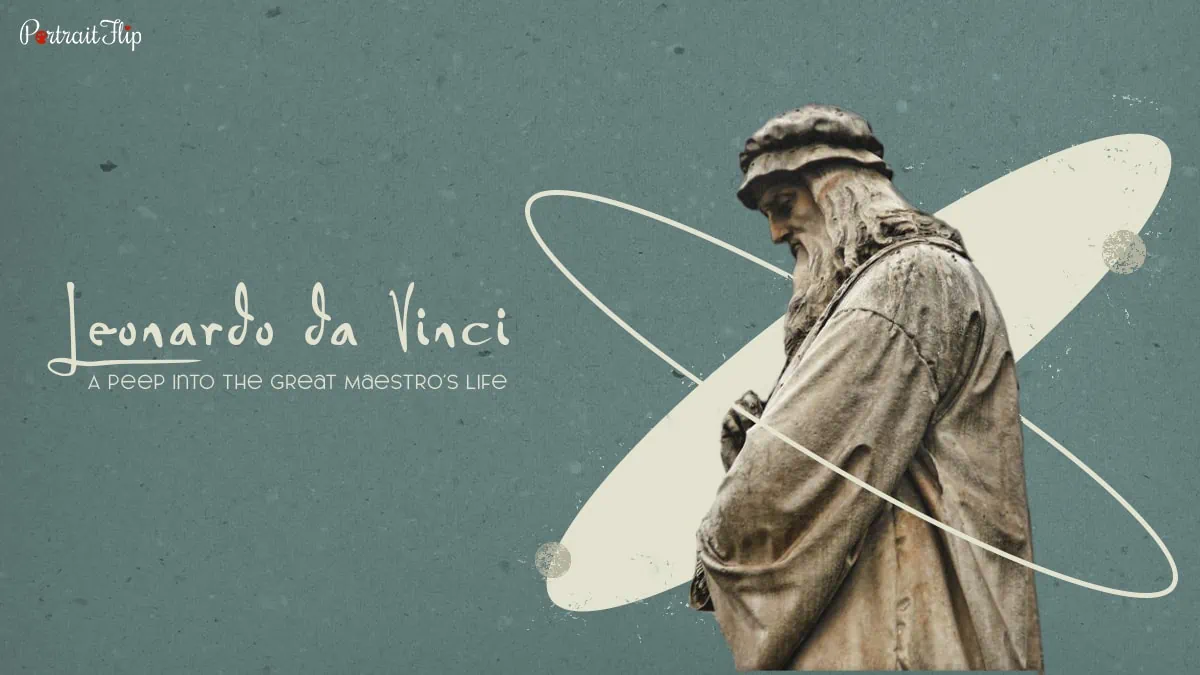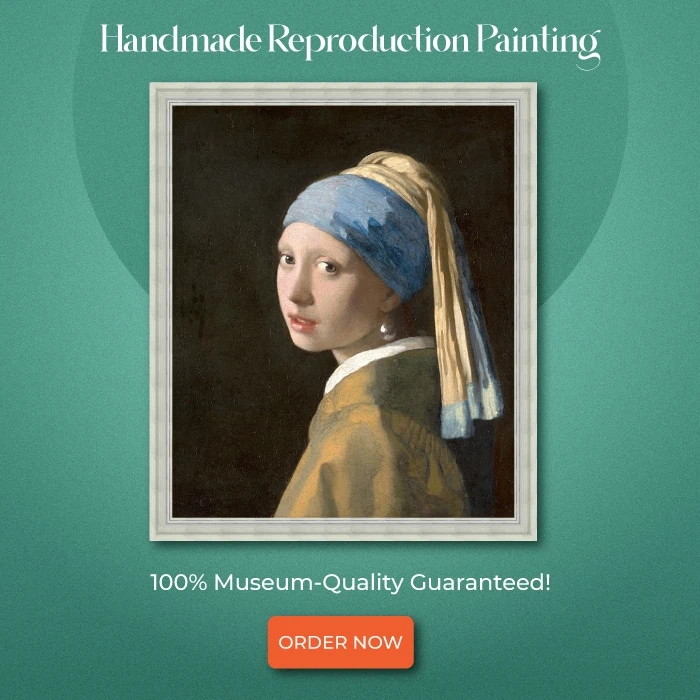How many times have you found yourself gazing into the eyes of a particular lady, with faint to no eyebrows and an extremely intriguing smile?
Yes, I am talking about the infamous beauty on canvas, Mona Lisa.
This beauty is a product of an extraordinary mind that graced this earth’s surface a long time ago.
The great maestro, Leonardo da Vinci!
Leonardo da Vinci’s art has moved millions of hearts and continues to do so even after centuries.
So, what exactly is so extraordinary about this artist and his art?
Art is never finished, only abandoned.
Does this quote ring a bell for you?
These intriguing words were by the art genius himself.
Take some time and think about this quote with context to our lady in the portrait.
We celebrate the smiling lady for her beauty and pose, but if we link it with Leonardo’s quote, it would suggest that even a masterpiece like that is not complete.
In fact, art can only be abandoned because there is always a new possibility with it.
That is the brilliance of Leonardo da Vinci’s art and thoughts!
Aren’t you intrigued to know more about the extraordinary life of this renaissance artist? I bet you are.
That is why I have curated an article wholly dedicated to Leonardo da Vinci, his life, his art and his accomplishments.
As an artist, it has always left me wonderstruck about this great artist, who did not have access to even half the equipment an artist owns today.
I am sure I have some Leonardo da Vinci facts that will leave you flabbergasted!
There is so much we can learn from Leonarda da Vinci’s life, as an artist and an art admirer. So, what are we waiting for?
Table of contents
Life Highlights of Leonardo da Vinci
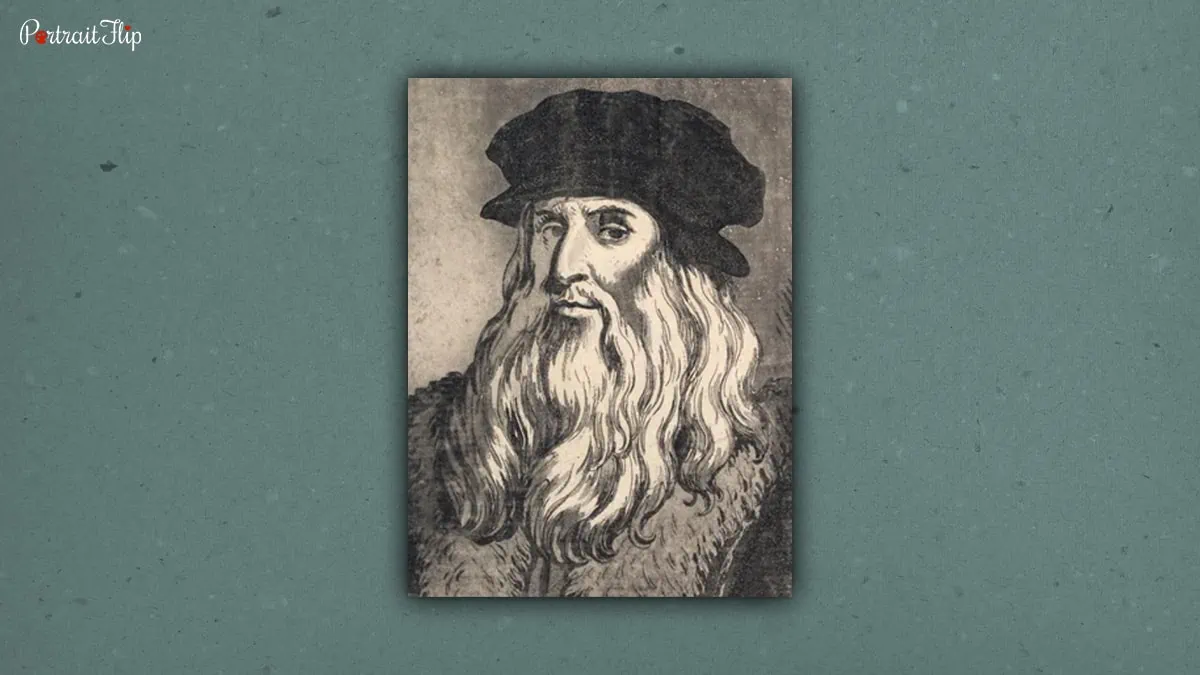
The Italian painter, Leonardo da Vinci, is infamously known for his art, even centuries after his death.
But how many of you knew that he was not just an artist?
He is known for being a genius with his art, but there are other roles he diligently played.
What we are all familiar with is Leonardo da Vinci’s drawings, there is more.
Leonardo da Vinci was also a sculptor, an architect, an engineer and a draftsman.
The man was brimming with talent!
If you would ask me about the number of artworks he has created, there would not be many.
There was also a lot of unfinished artwork too.
The brilliance of this Italian artist lies in the fact that the art he created got permanently etched to the world’s memory.
‘The Last Supper’ (1495- 1498) and ‘Mona Lisa’ (1503- 1509) are some of his most celebrated works even to this date.
If you are an artist, an art student or an art admirer, I doubt you could survive without learning about these masterpieces!
Leonardo da Vinci paintings became one of the most influential paintings of all time.
Renaissance paintings would not be the same without his contribution, don’t you think so?
In fact, da Vinci is known to be the founder of the High Renaissance and one among the infamous Renaissance artists.
His notebooks and journal are said to have several scientific scribing, because of which a lot of people even thought he was a scientist.
I mean with his wondrous mind, I would not be surprised if he really was one!
Aren’t you curious to know about this art genius who created a whole new wave in the world?
I definitely am excited to share what I know about the maestro, his life and his accomplishments!
The Journey of Leonardo da Vinci’s Life
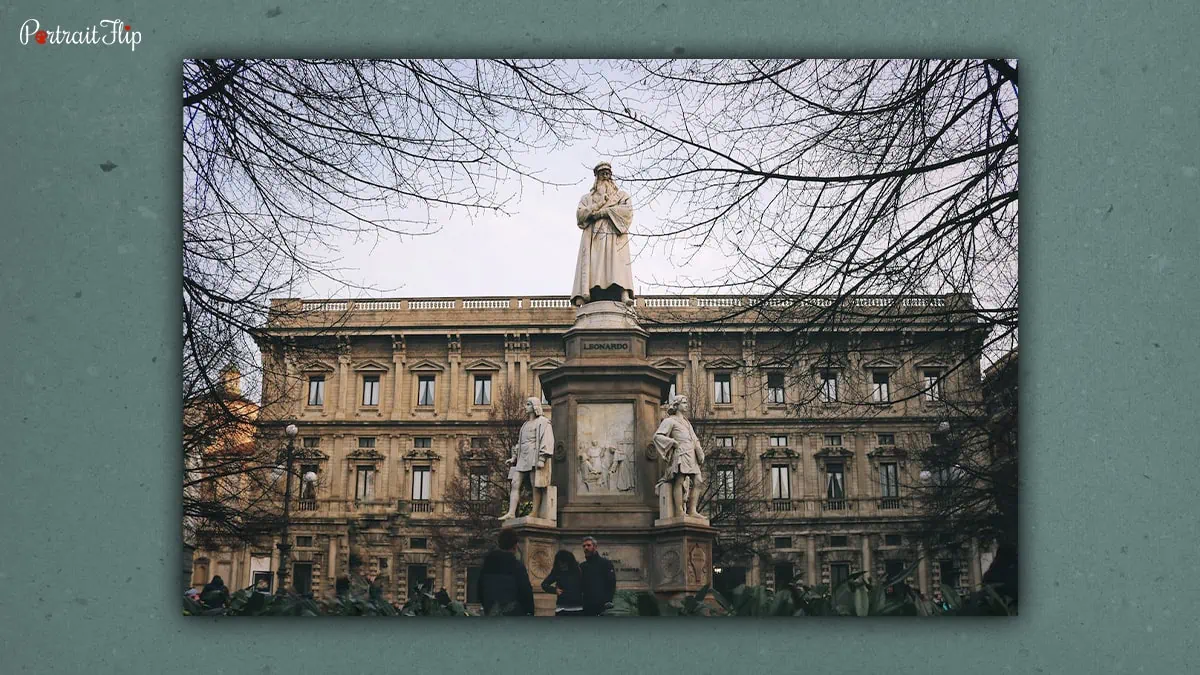
An extraordinary journey of an extraordinary artist!
I think a lot of us believe in the quote, Art imitates life.
If you too believe in this then you know that there are many aspects in our life that reflect through the art we do.
Leonardo da Vinci’s life too is a prime example of this.
Imagine dedicating your life for what you’re passionate about, for art.
No wonder his art attracted so many hearts around the globe.
Let us take a journey through this great master’s life.
Right from the beginning, to the very end.
Let us indulge in his dedication to art and be inspired all over again!
Early years

Leonardo da Vinci was born on 15th April, 1452, in Vinci, Italy.
His father was Ser Piero, a 25 year old notary who was romantically involved with a peasant girl, Caterina, his mother.
Leonardo was the couple’s illegitimate son, but thankfully, his father took him under his care shortly after his birth.
Quite the beginning, isn’t it? Well, Leonarda da Vinci’s early life definitely had a lot going on!
Growing up in his father’s house, little Leonardo had all the access to the education that was available.
He was treated as a legitimate son, and the elementary education he received included reading, writing and arithmetic.
Trust me, in those times, to receive such kind of education at an elementary level was considered a huge privilege!
The little maestro was already at work from an early age and showed signs of artistic inclinations.
Leonardo da Vinci’s art had an early start in his life.
At the young age of 15, Leonardo was assigned to be the apprentice of an artist, Andrea del Verrochio, by his father.
His early life was spent in Florence, in his teacher’s workshop, under his guidance.
Leonardo is known for choosing to stay at his master’s workshop for five years straight before becoming an independent artist in 1481.
In 1475, Leonardo had his first big break as an artist. He was assigned to paint an angel in “Baptism in Christ ”, by Verrorchio’s.
Want to know a fun fact?
This genius in making was so good at painting the angel, even better than his master.
It is allegedly known that Verrocchio restrained from ever painting again, seeing his student’s natural brilliance at art.
Imagine your own master giving up practicing art because the student turned out to be extraordinary in it!
Beginnings at Milan
It is only in 1482 that Leonardo set out to earn on his own and he traveled to Milan.
Here he worked under the Duke of Milan and got his first official art commission.
This is ‘The Adoration of Magi’, the painting whose beauty and innocence is still talked about to this day.
It is to be noted that this project, along with another one, was not completed.
There were a few unfinished paintings of Leonardo too, which gained equal popularity.
Moving to Milan under the service of the Duke, he ended up staying there for the next 17 years or so.
The artist was in his 30s in this period.
He started appearing in a lot of court circles.
His sophisticated and pleasant mannerisms were openly welcomed in these court gatherings.
The maestro in making was known to be a polite yet reserved personality.
His work was recognized by many and therefore, he was always kept busy with his artwork.
His contributions then were both in the form of paintings and sculptures.
Can you imagine witnessing the magic of Leonardo da Vinci’s inventions?
Or ever wondered how it would be to interact with him? Because I definitely have!
Da Vinci’s expertise was not limited to that.
He was often approached for guidance for his knowledge on architecture, hydraulic and mechanical engineering, military matters, etc.
Were you aware that our great artist would never sit idle, he gave himself endless goals.
These goals were said to be never ending, almost as if it was impossible to complete them all, just like his unfinished artworks.
All this at such a young age? He is not the Renaissance royalty for nothing! His early years were also known as his first Milanese period.
It is in the first Milanese period Leonardo da Vinci’s art reached another level.
He created the breathtaking and infamous painting, ‘The Last Supper’!
Middle Years
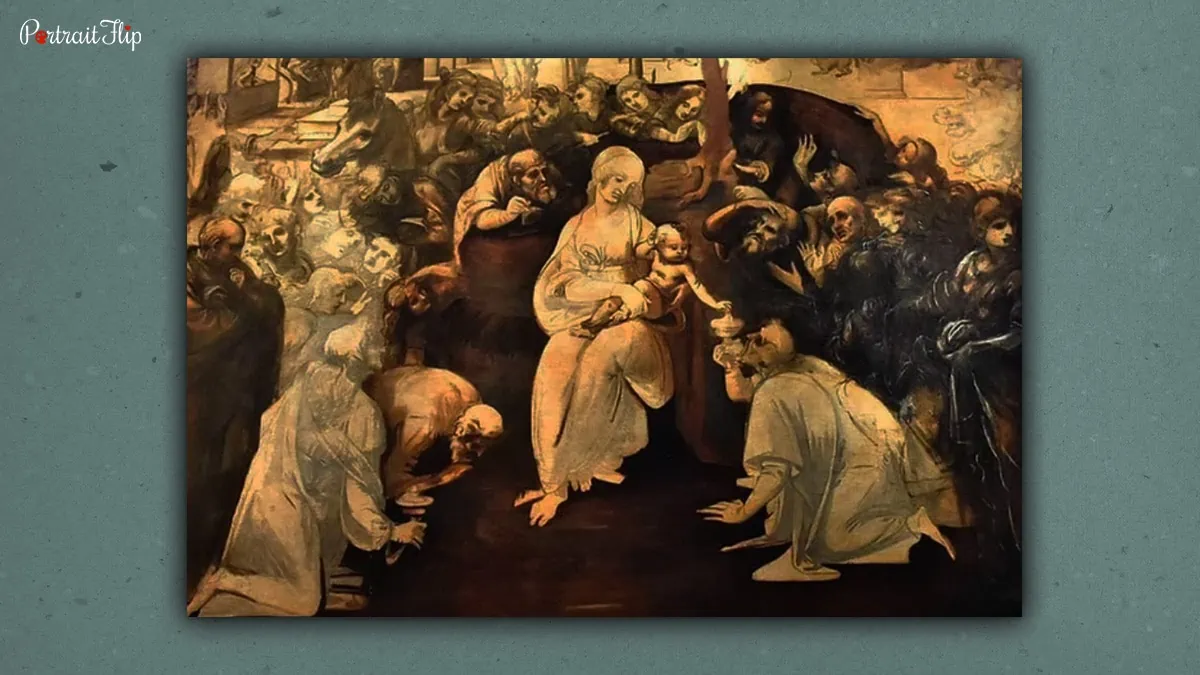
Now we enter da Vinci’s middle life period, which again is separated as second Florentine and second Milanese periods.
Shortly after the French’s victory over Milan, Leonardo finds himself traveling again.
After a really long hiatus from his hometown, he returned back to Florence in 1500.
This time, he was welcomed with so much grace and pomp.
They honored their native son who was already renowned as a genius artist!
He closely worked with different churches from the beginning of his career and that is of course reflected in the artwork he has produced too.
By this time, he was involved in mathematical studies, architectural expertise along with creating his paintings.
But he did not come to settle in Florence. Leonardo had this never-ending thirst for life and experiences.
Maybe it was this that did not let him stay in Florence for too long and he left in 1502.
This is when he enters his military era! He committed to service as a “senior military architect and general engineer”!
This was under Cesare Borgia, the scandalous son of Pope Alexander VI whose ways were often ruthless and unapologetic.
This is where he had his first hand experience with the military.
But this again did not put a stop to the famous da Vinci’s paintings or take him away from his artistic inclinations. .
1503 was a happening year that saw some of the best of Leonardo da Vinci’s art. He was commissioned to paint mural art in Florence.
Sources say this painting would have been twice as large as da Vinci’s ‘Last Supper’.
Yet another famous unfinished painting by Leonardo da Vinci is the ‘Battle of Anghiari’.
It is during the same period that he started working on his monumental ‘Mona Lisa’, which was completed in 1509!
Passion for Scientific Study
Anyone who has closely studied Leonardo da Vinci knows about his infamous journal scribes, where the proof of his caliber lies.
He entered a phase of intense scientific study in his second Florentine period.
He also had the experience of doing dissections in the Santa Maria Nuova hospital which improved his knowledge in anatomy.
Everything Leonardo learned and experienced was portrayed in his paintings.
He was well-known for his precision in depicting the human body in his paintings, especially infants.
In this period he indulged himself in intense research over various subjects in the scientific world.
Is it even a surprise how Leonardo da Vinci’s inventions have been so mind blowing in its age?
Suggested Product: Custom Made Charcoal Drawings
Late Years
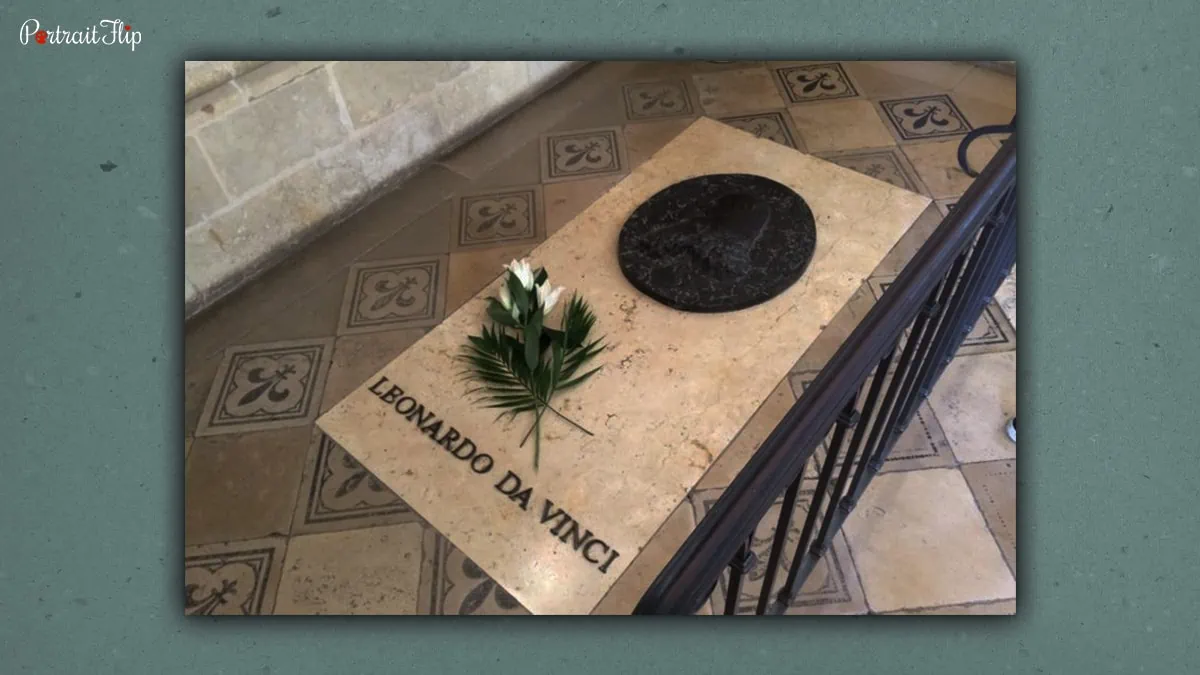
When he came back to Milan again, he was always surrounded by his apprentices.
But during this period, his artistic creations went down in number.
During this period, he was somehow more inclined to scientific studies, and had inscribed all his findings in his notebooks.
“All knowledge which ends in words will die as quickly as it came to life, with the exception of the written word: which is its mechanical part”
No wonder he documented everything in his notebooks, right?
By the time he was 60 years old, Leonardo had to move yet again, and this took place in 1513.
He moved to Rome with his disciples, desperate to get a job for a decent living.
He was welcomed in Rome by his patron Giuliano de’ Medici, with accommodation at his residence and a monthly stipend.
With this, Leonardo remained in Rome for another three years.
He made a final exit from Italy in 1516 at the age of 65 along with his most devoted disciple, called Francesso Melzi.
His last couple of years were spent in a residence next to the King’s summer palace.
He was eminently given the title of Premier peintre, architecte et méchanicien du Roi, which translated to. “First painter, architect, and engineer to the King”.
There are artists we know who have channeled their agony into art work, like the Starry Night and Van Gogh’s Sunflowers.
He was treated with the respect he deserved by the King and had the liberty to do whatever he wished to.
His last few artistic artwork consisted of sketches for court festivals, plans of the garden and the palace, etc.
Leonardo da Vinci’s death happened in the year 1519.
He took his last breath in the Cloux residence. His resting place is at the palace church of Saint-Florentin.
It is disappointing that his grave can longer be located because the church was destroyed during the French Revolution.
After his death, his favorite pupil became the heir to da Vinci’s scientific and artistic estate.
Does it not feel devastating that his grave can no longer be found?
Apparently, the alleged remains of Leonardo da Vinci were found in the year 1863.
His remains were then moved to the chapel of Saint-Hubert which is now officially known as his resting place!
Decoding the da Vinci Art

“I have been impressed with the urgency of doing. Knowing is not enough; we must apply. Being willing is not enough; we must do.”
Are you even surprised that this is a Leonarda da Vinci quote?
It is very clear that he wrote only what he experienced himself.
We already discussed how ad Vinci was not a man to sit idle, in fact his whole life had been dedicated to learning and teaching art.
Although he is said to have intimate relationships, he never married.
He kept himself busy with his incredible inventions.
Now that we have gone through a quick review through Leonardo’s life highlights, I want to focus on his art now.
There is so much that his art can tell us about his personality!
Like he says in his quote, he has always been applying his knowledge in everything he does.
His just makes his artwork even more intricate in design and meaning.
Aren’t you curious and excited to decode some of these paintings?
The intent and mystery behind them? Let us see what we can find out from them!
Suggested Read: Six Painting Mysteries
The Last Supper
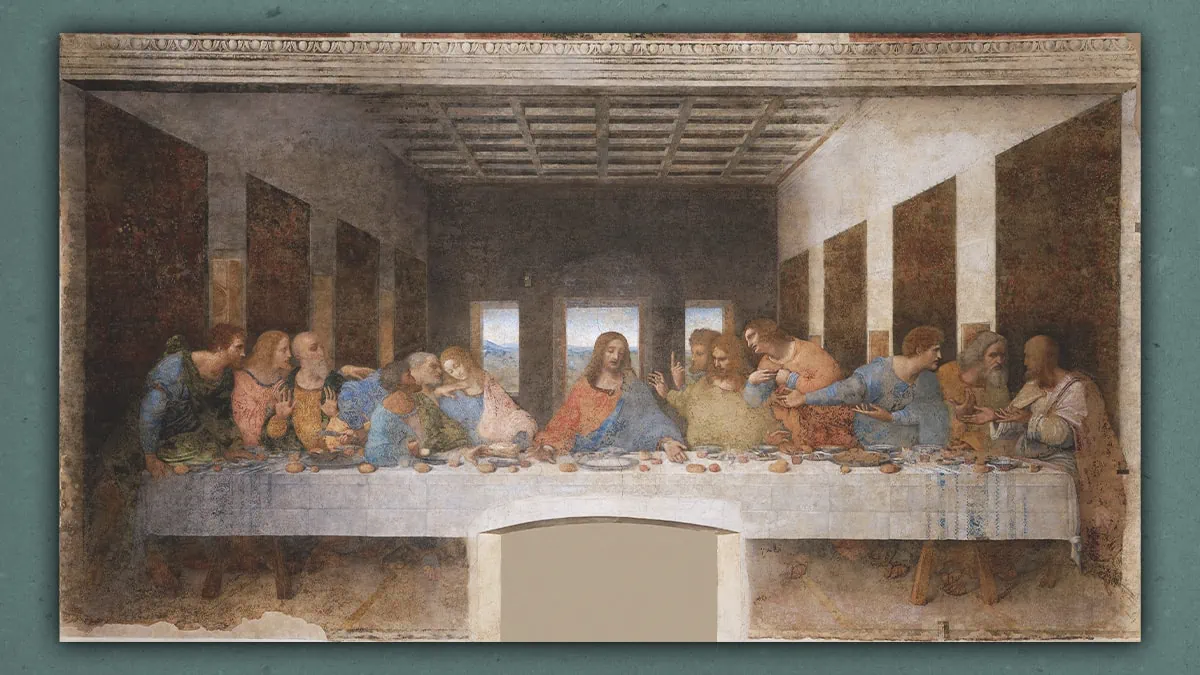
Leonardo da Vinci’s paintings have always had a biblical inclination to it.
The Last Supper ends up being the best among all he Christian Art, even to this day.
Leonardo da Vinci’s painting of the last supper is of a one of a kind piece.
It is moving, thought provoking, powerful and extremely expressive.
Leonardo’s famous mural painting represents that exact moment when Jesus was dining his last meal with his 12 apostles, and announced that “One of you will betray me”!
We see the agitation, aggression and disappointment in the apostles’ faces, each with a unique reaction.
This painting has always excited me because I feel that da Vinci painted in such a way that it puzzles the viewer also!
The apostles are painted in such a way that we are trying to find who the guilty one is!
The guilty one was Judas, the apostle Jeusus is referring to.
Even the way he is painted is extraordinary.
What makes da Vinci’s painting so unique is the little details that he adds that enhances the storytelling.
Let us do a deep dive into the painting! For that, we need to divide the painting that has 13 characters into 5 groups.
Far Left Group
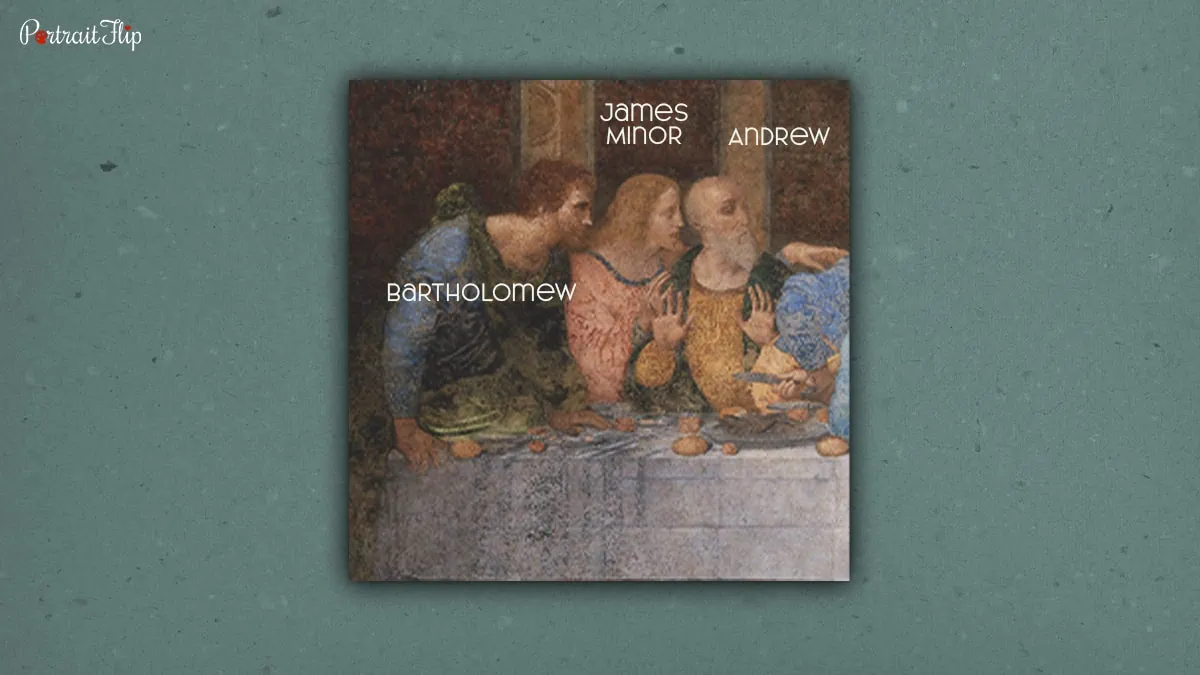
In this group, what is the common expression you notice?
It is the expression of great shock and surprise.
They are bewildered about what Jesus just uttered!
Bartholomew, as you can see in the painting image, has risen from his seat showing agitation.
James minor seems to have the same face of surprise, and he is seen leaning towards Andrew.
Andrew here is so taken aback that he has both hands in the air, almost being immediately defensive about what he just heard.
Near Left Group
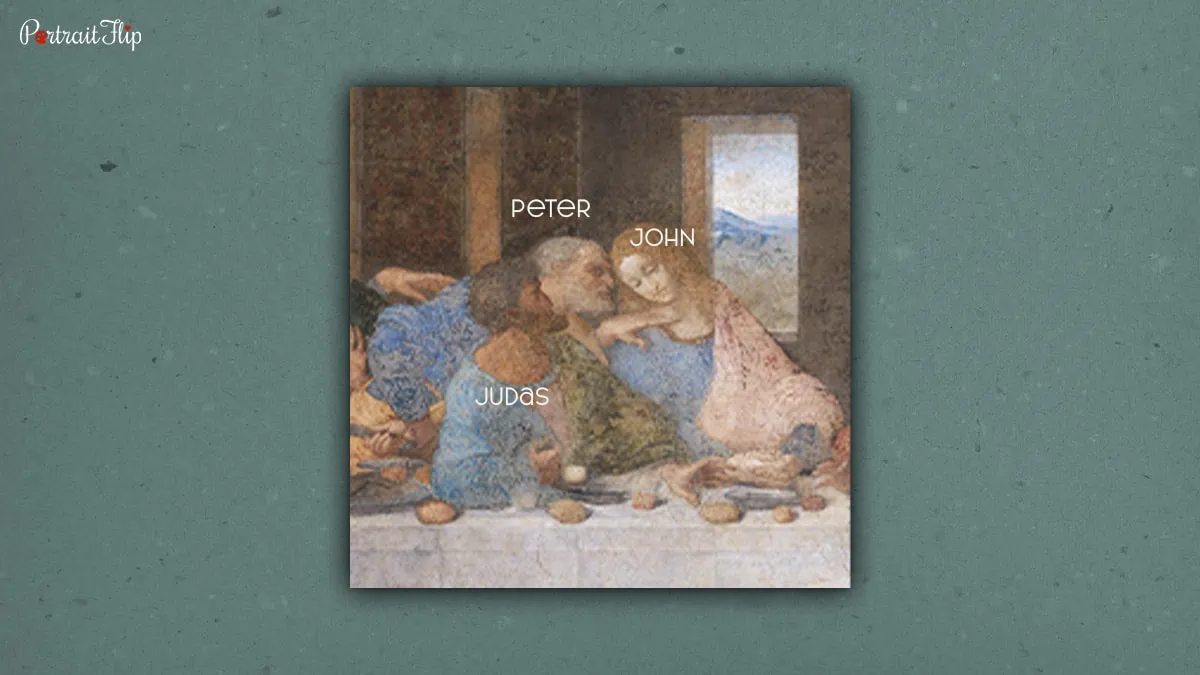
Here we see the most agitated apostle of them all, that is Peter.
Peter has a knife in his hand and seems to be leaning forward with an angry face.
Judas on the other hand, turns to face Jesus, but his hand is shown clutching a pouch.
Sources say that it was the money given to him by the Russians for revealing Jesus’s identity.
His face resembles something about being partially scared, and partially shocked.
Young John, seems to be least affected by Jesus’s statement.
He looks disappointed to me, probably at the thought of Jesus being betrayed by one of his own.
Otherwise, his body language is represented to be calm and relaxed.
Jesus in the Centre
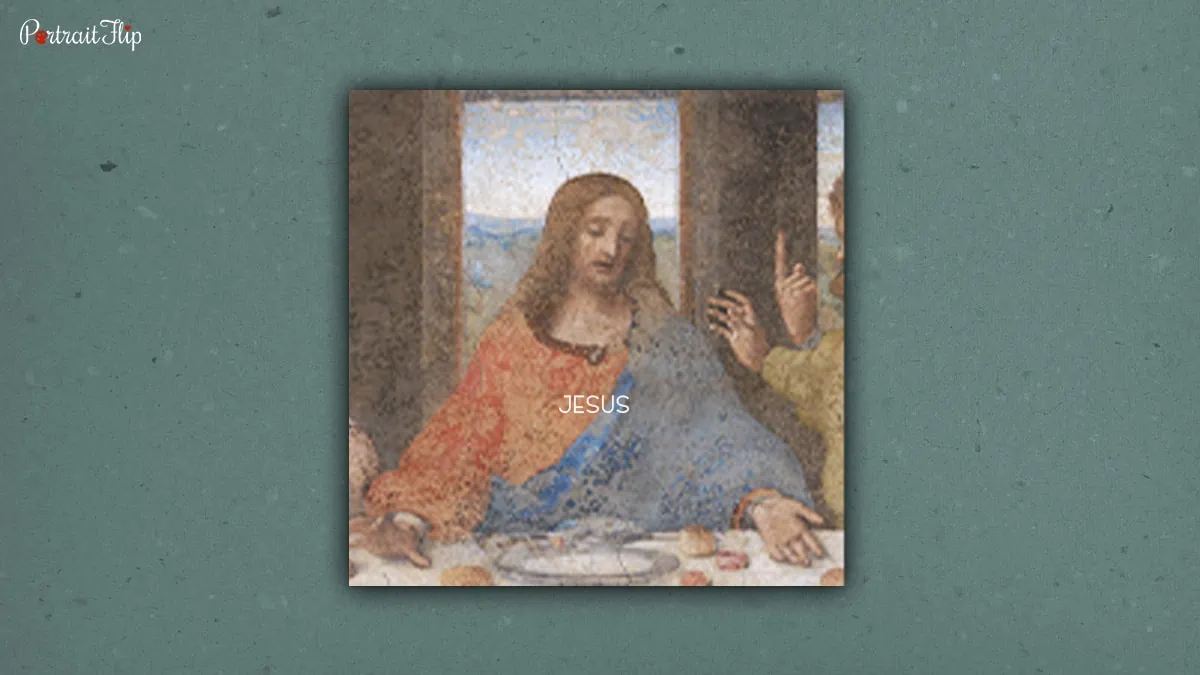
Jesus, the central character of this painting, has a composed posture.
His recognition of the betrayal is seen on his face as disappointment.
His solemn face is tilted down with his eyes looking downwards.
He has both his palms open, one facing up and the other facing down.
His expressions show that he was aware of everyone’s reactions even though he wasn’t looking straight at them.
Jeus being in the center also depicts how he is the center of everything.
His posture also has a divine interpretation.
The triangular posture represents the holy sacrament of bread and wine!
This we can understand as a symbol that was meant for the onlookers of the portrait and not the apostles.
Near Right Group
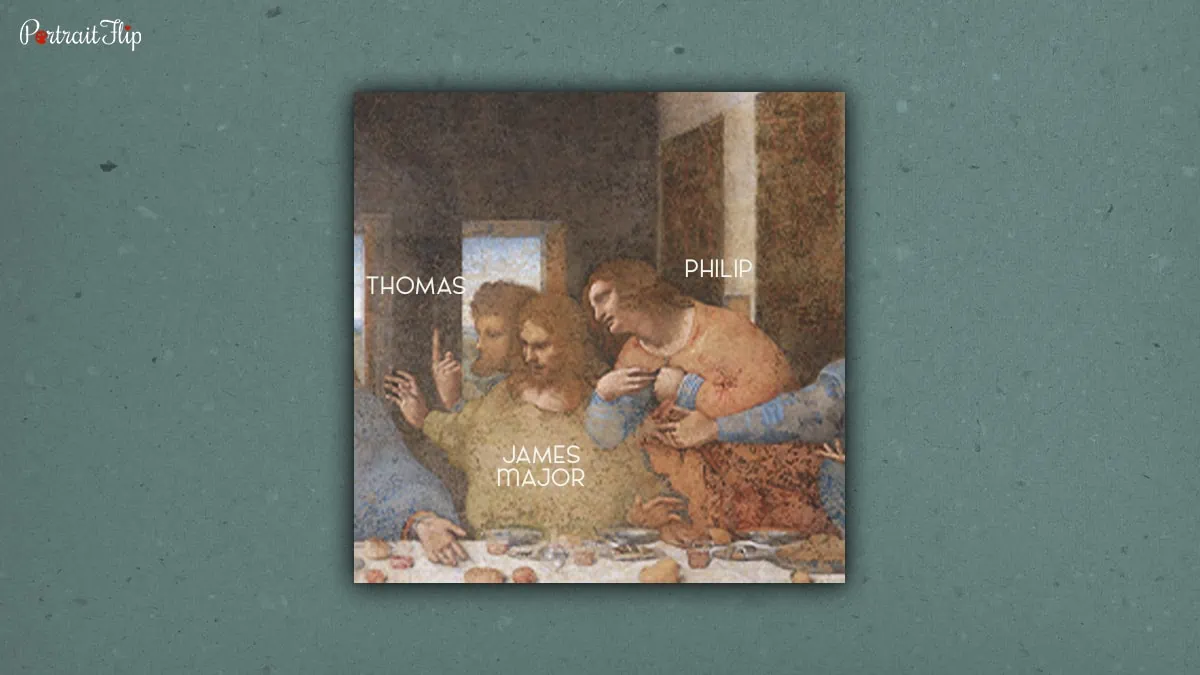
The next group is the one on the right side of Jesus in the painting. It is Thomas, James Major and Philip.
We can see how Thomas is so agitated that he is waving a finger at Jesus. His face is stormy and frustrated.
James Major, seems to be blocking Thomas from getting too close to Jesus, but at the same showing dismay at what he heard.
Philip has again risen from his seat, and has his hands on his chest. His body language seems to be asking for an explanation. There is concern showcased on his face.
Far Right Group
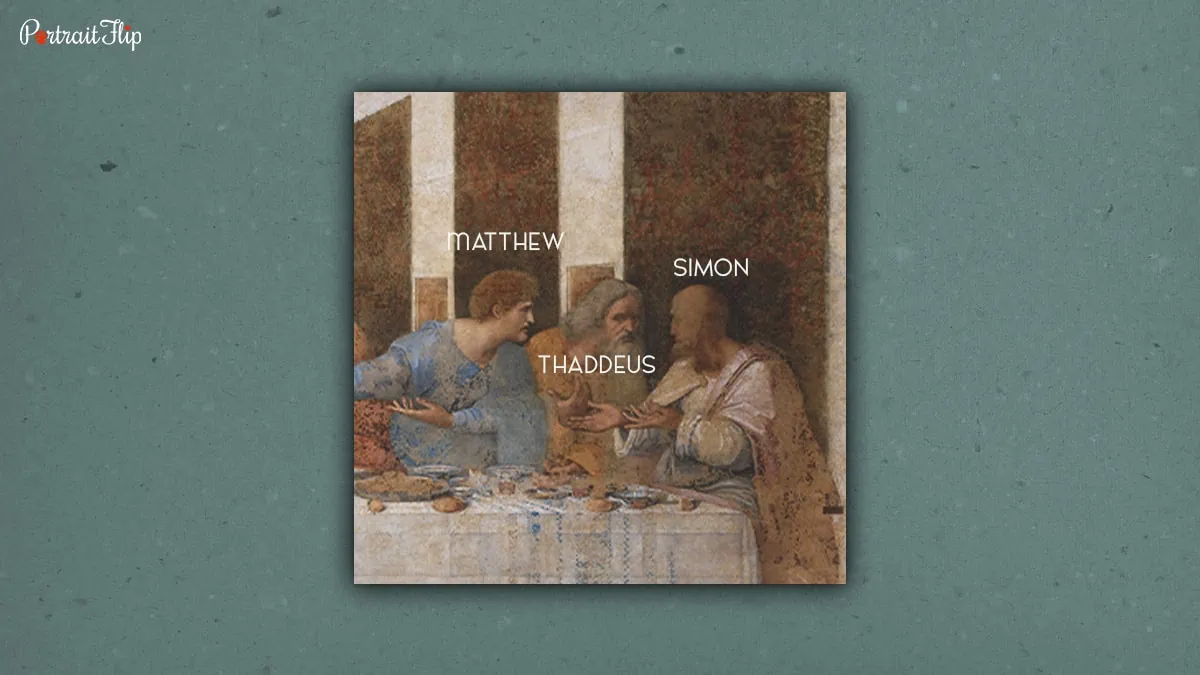
The last group is on the far right, Matthew, Thaddeus and Simon.
Matthew and Thaddeus are both turning towards Simon, who is equally confused and shocked about what happened.
Simon has his hands open to show that he is not aware of what is happening.
His confusion and helplessness is wonderfully depicted by Leonardo!
Apart from the people, what do you see in this particular Leonardo da Vinci’s art?
Do you notice how the table is laid?
The details of the table cloth and lace, the food spread out and even the door behind them. Everything is crafted together as a masterpiece!
There is so much we as human beings can learn from this particular Leonarda da Vinci’s art.
Having the painting of The Last Supper in your dining room would be mind blowing, right?
But yes, it is very much possible. Check out the Reproduction Painting service that we provide at PortraitFlip to know more!
Salvator Mundi
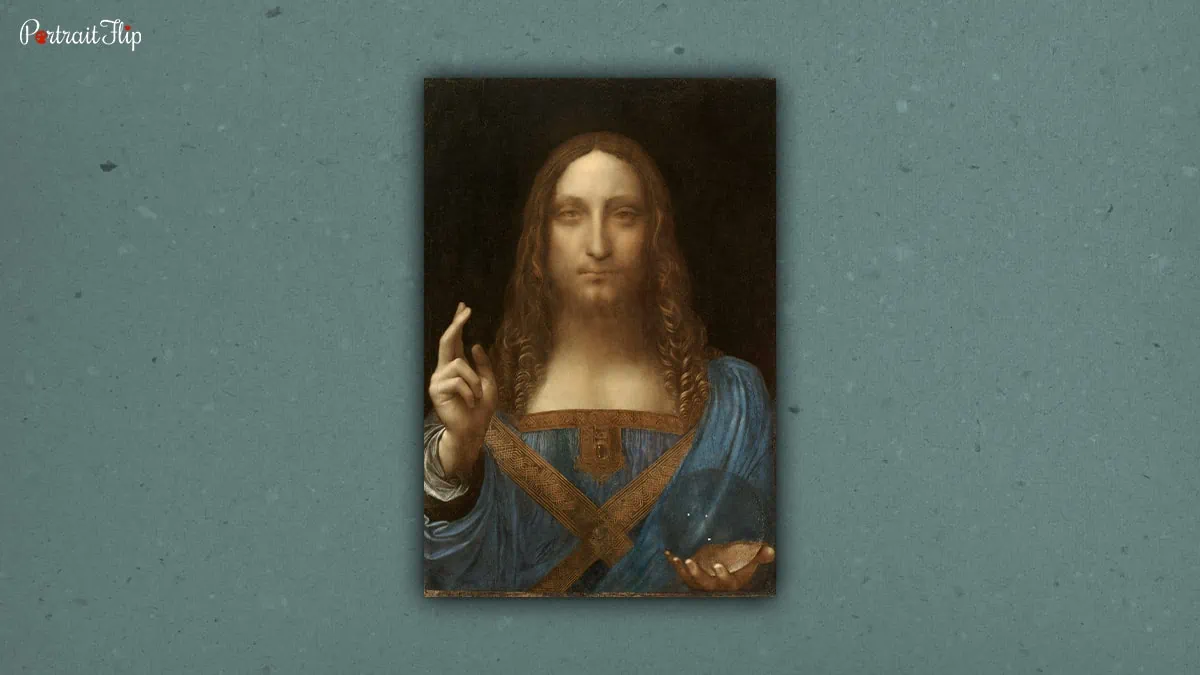
Among Leonardo da Vinci’s art, the ‘Salvator Mundi’ has also attracted a lot of appreciation and discussion. It is known to be one of most investigated pieces of art in the world of the mysterious features it holds.
Imagine, this one particular Leonardo da Vinci’s art has managed to stir up religious, cultural, and political controversies. Can you believe that?
Suggested Read: 10 Controversial Artworks That Created A Storm of Theories Around Them
But what is so mysterious about this particular painting that has managed to cause so much chaos? Let us find out;
Dissecting the Salvator Mundi
What exactly is the painting of ‘Salvator Mundi’? It is a one among the Leonardo da Vinci inventions that had captured millions of hearts. It is known to have been created between the years 1499 and 1510.
What is so interesting is that people even questioned if this painting is a da Vinci product! It was also found in a very poor condition and had to be cleaned and retouched. The restoration process itself took a lot out of the painting.
What does the painting symbolize though?
Let us start with the name. Salvator Mundi is Latin for “Savior of the World”, depicting Jesus Christ.
One of the leading scholars who studied art and artists had stated that the painting was commissioned by King Louis XII of France and his wife Anne of Brittany. It is allegedly said that the painting was used for the royal family’s personal devotion.
In the painting, Christ is shown with a calm face and kind eyes. He has brown soft curls flowing down and resting on his shoulders.
He is dressed in Renaissance clothes. His two fingers holding up indicates him giving an invocation of a blessing or what is known as a benediction.
With his left hand, we can see him holding a crystal orb, which is known to depict the mesmerizing sphere of the heavens. Holding the orb again shows his duty and power as the protector of the universe.
Do you know how much this particular da Vinci artwork was sold for after all that damage and restoration? It was sold for $450.3 million dollars in 2017, New York!
But what if I said that you don’t need millions of dollars to have an alluring replica of the Salvator Mundi? Yes, you read that right!
You can choose to have your own Salvator Mundi painting using our Reproduction Portraits feature!
I have just chosen three to discuss here, but there are other famous paintings by da Vinci that you can indulge in too.
The da Vinci Influence

The great maestro’s life and art has influenced millions of artists around the world even after 500 years of his death. This influence has been channeled through other mediums of art too!
Leonardo da Vinci’s art helped the world of artists take a whole new leap into versatility and traditional art in this new era of digital art.
Artists across the globe have created art that has been influenced by Leonardo’s artwork.
Some sought to do traditional art, while others made digital representations of his paintings.
That said, we also know that the battle between handmade and digital art is never ending!
Today, we can even find a lot of merchandise in the market that has da Vinci’s artwork on them.
So, how did PortraitFlip, a completely art driven brand, be influenced by the great maestro?
We came up with our new service called Reproduction Paintings!
I know, I know! I have been bringing up Reproduction Paintings quite a few times without really explaining what it is.
Let me tell you right now!
What is Reproduction Painting?
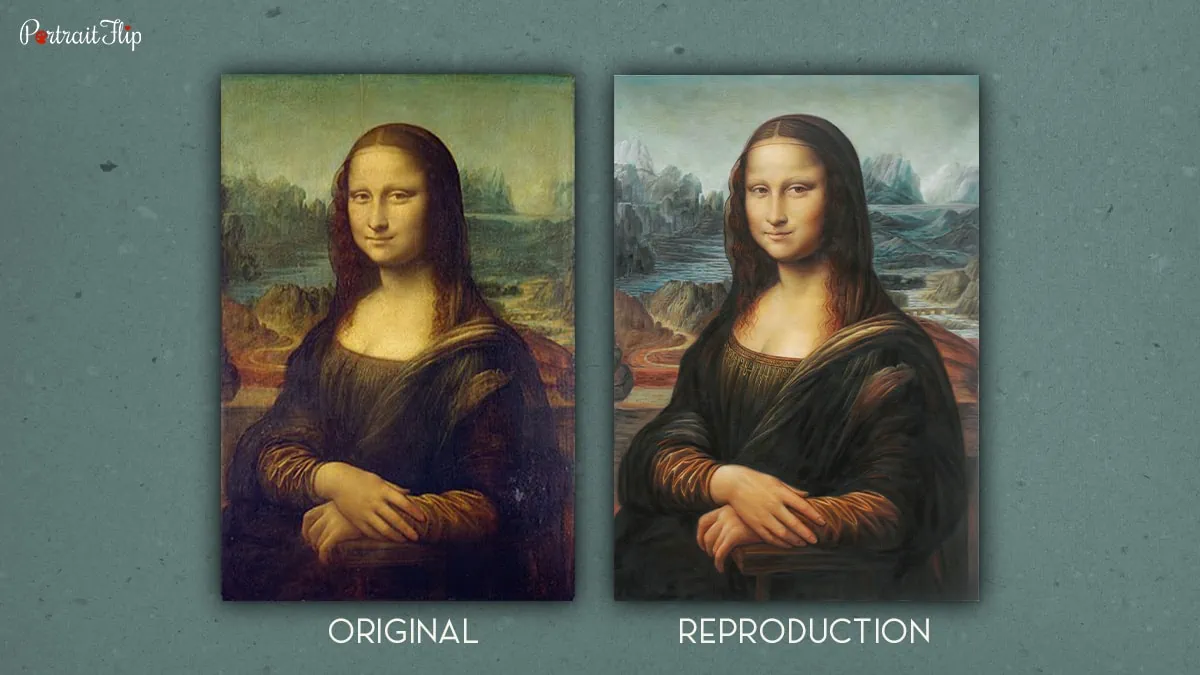
We at PortraitFlip have some extraordinarily skilled artists who are passionate about delivering the art that our customer needs.
Their skills are so immaculate that they can make brilliant replicas of any famous painting that you ask for.
That is our new service, Reproduction Paintings, for you!
You can choose any famous painting of your choice, even Leonardo da Vinci’s famous paintings.
Our artists will create a handmade Da Vinci replica just for you!
By owning your own Reproduction Painting, you are also honoring the great artist’s work and remembering them for their contributions.
Art instills passion in you and keeps the thirst for knowledge.
Like the great maestro had once said, “Knowledge of the past and of the places of the earth is the ornament and food of the mind of the man”.
So, while Leonardo lives in the past, his art is still here among us to cherish and take forward!
As you must have already gathered, I am so much in love with Leonardo da Vinci’s quotes. And so, I would like to conclude my article with one;
“Time stays long enough for anyone who will use it”- so, make sure you use yours wisely!
Author’s Greetings!
Hello Readers!
I hope you enjoyed reading about the great maestro and his paintings. I am so glad that you took out some time to read my blog!
There are so many theories and speculations we have heard about Leonardo da Vinci. If you know any interesting ones yourself, do share them with me in the comment section. I would love to hear from you!
So, until the next time,
Cheers xx
Leonardo da Vinci’s paintings became famous because of how he applied all his learnings into his paintings. His paintings had a language of their own. It was so unique and versatile that it became a prime addition to the Renaissance movement.
His father was a Florentine notary and landlord, Ser Piero, while his mother was a young peasant woman, Caterina. They birthed Leonardo out of wedlock.
The paintings of Leonardo da Vinci that are preserved in the Louvre are, The Virgin of the Rocks, La Belle Ferronniere, the Mona Lisa, the Saint John the Baptist, and the Sainte Anne.
Leonardo da Vinci died at the age of 67, possibly because of a stroke, on May 2nd, 1519. He was staying at the Clox residence next to the King’s summer palace, when the death occurred.



